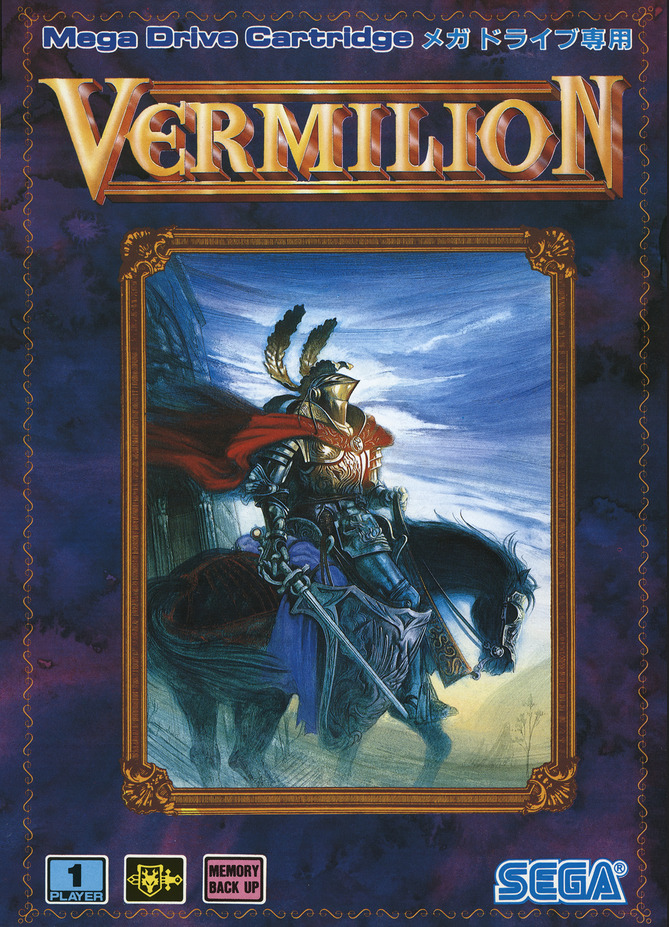
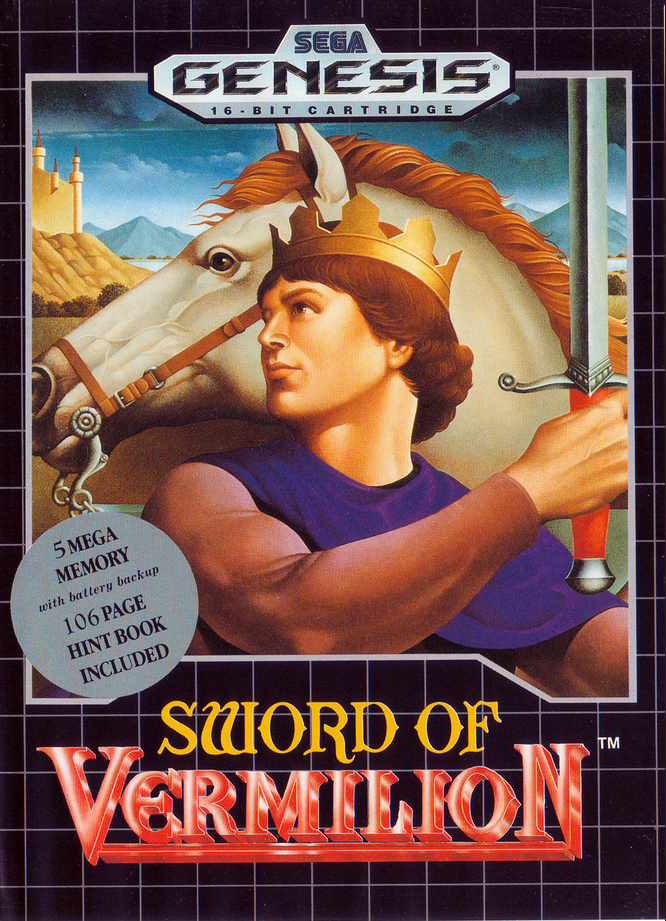
PLAYERS: 1
PUBLISHER: Sega
DEVELOPER: Sega AM2
GENRE: Action/RPG
RELEASE DATE: 12/16/89 – (JP), 10/90 – (US), 04/91 – (EU)
Sword of Vermilion has no less than four perspectives. This is an ambitious amount for any game, let alone Sega’s first action/RPG. A top-down overhead view accompanies you around town, tilted overhead when you’re in battle, a side-view for fighting bosses, and a first-person perspective when you’re exploring the wilderness and dungeons.
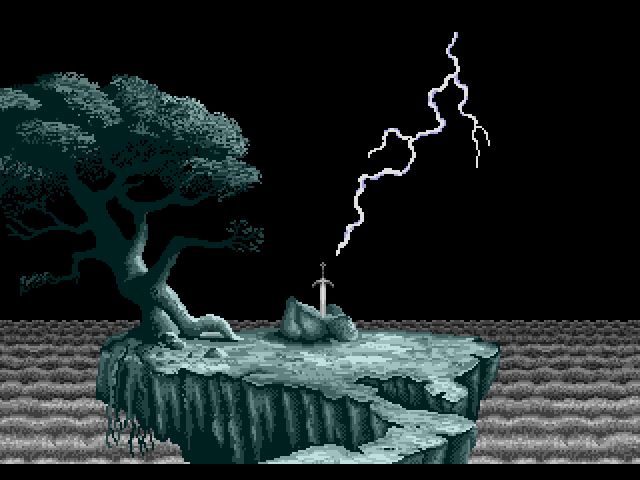
Sword of Vermilion doesn’t need all these perspectives to function, but it includes them because it’s a showoff. The showboating doesn’t stop there: massive bosses, an epic story, unusual real-time battles, fourteen dungeons to explore, and a killer soundtrack that evokes Prince. Sega was so impressed with Sword of Vermilion that they featured it heavily in their “Genesis Does What Nintendon’t campaign” as “the most complex, most challenging adventure role playing game ever made.” Forget the repetitive turn-based sci-fi of Phantasy Star II: Sword of Vermilion was Sega’s Duke of New York, A#1.
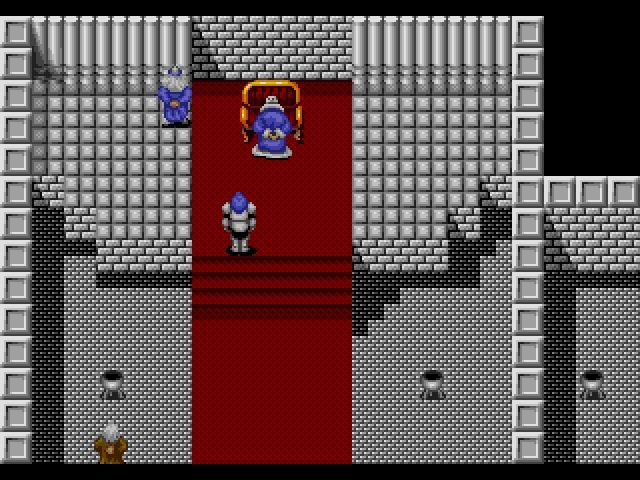
The story is a common revenge tale, but a surprisingly effective one. The hero’s father, King Erik of Excalabria, was killed by rival king Tsarkon. Before Erik passed on, he gave his son to his trusted servant, Blade, to raise. The game opens eighteen years later with Blade on death’s door, and Erik’s son (who you can name) discovering both his royal heritage and his life’s purpose: find and defeat Tsarkon and take the power back.

The story is also where Sword of Vermilion excels. Each town you encounter comes with a mystery to uncover or problem to solve. From Watling, a village filled with mysterious and forgetful old people, to the divided township of Malaga, each area contains a surprising amount of personality. Each town also has its own complex musical theme, courtesy of composer Hiroshi Kawaguchi. Many of them sound like a mix of Renaissance Faire melodies combined with Linn LM-1 Drum Computer beats, which is as awesome as it sounds. Any time I arrived to a new town, I would wander around and listen to the hot medieval beats until I was satisfied.
Once old man Blade gives our hero a Ring of Wisdom and some Kim (the currency in the game), he dies and you’re on your own. Equip a cheap sword and shield and get to adventuring. Once you leave the town, you’re in first-person mode. If you have a map of the area (usually acquired from a friendly townie), the area layout will appear on the right hand side of the screen, along with your experience points and amount of Kim.
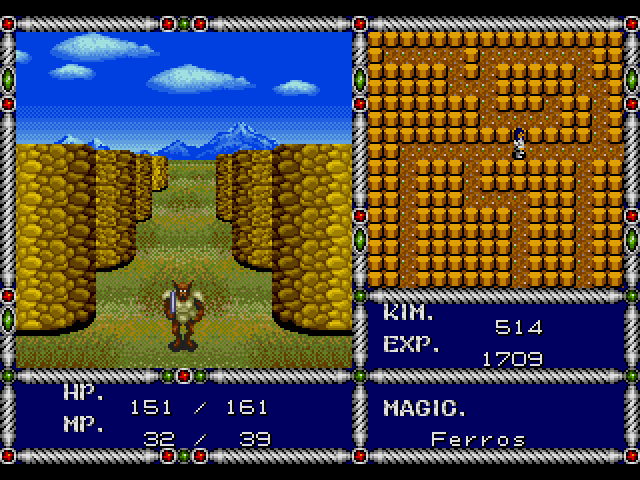
Vermilion’s landscape is littered with bullies, like slimes, bats, and oversized dogs wearing hospital gowns. Encounter one of these hooligans and you’ll be thrust into battle mode on a separate independent screen. Once there, you fight a varied amount of whatever creature you encountered. If there’s only a couple enemies, it’s easy enough to walk up to them and stab them. If there’s a whole group of them, swing like hell to escape their grasp and hope you don’t acquire too much damage. You can also buy magic spells from town to use in battle. Magic is occasionally helpful, particularly when you’re surrounded, but I found myself using my sword more often than casting spells. Not because your sword is better, but because your magic is limited and should be used only when necessary. Thankfully, if a group of foes is too much to handle, just walk off screen and end the battle. Works every time.
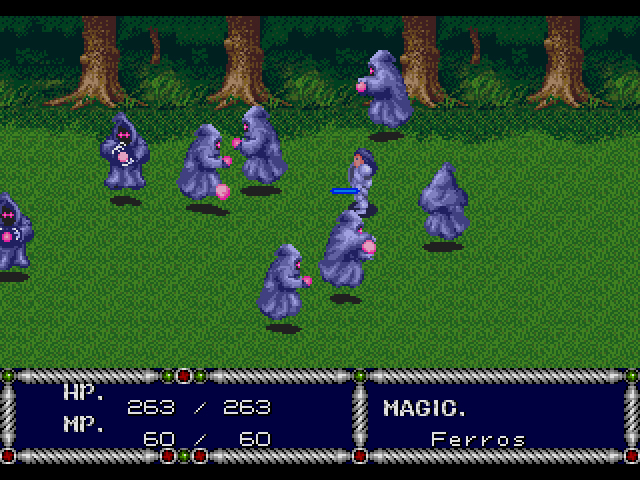
Secluding the player on a large open field with several enemies is an interesting idea, but not without a couple flaws. For starters, your character’s attack sucks. Rather than swing his sword outwards, he slightly lifts it up and down while keeping it close to his person. In order for your sword to hit the enemy, you have to be within kissing distance of them. Also, the limited sword reach combined with battle mode’s tilted overhead view can make it difficult to see if you’re hitting the enemy. Attacking from the side is always the best way to go.
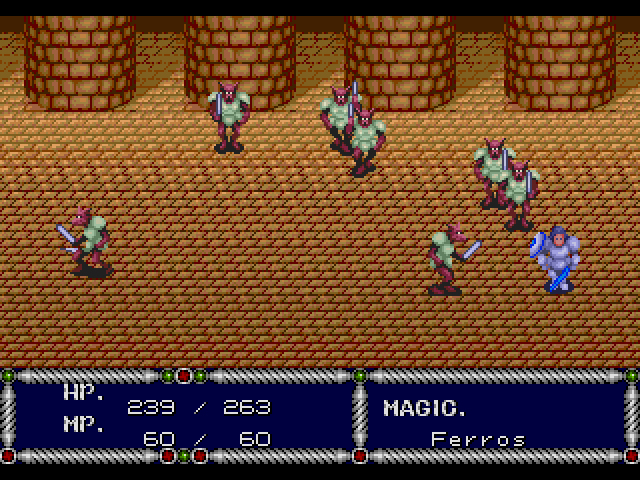
The fourteen caves are dark labyrinthine complexes that require a lantern or candles to navigate. In each cave, you fight enemies, search for treasure, and if necessary, destroy a large boss at the end. Thanks to the first-person view, the caves of Sword of Vermilion feel more akin to Phantasy Star‘s dungeons than Phantasy Star II ever did. Unfortunately, Sword of Vermilion‘s bland gray caves aren’t nearly as immersive as Phantasy Star‘s dark ominous dungeons. The latter oozed with foreboding atmosphere, while the former feels like a means to an end.
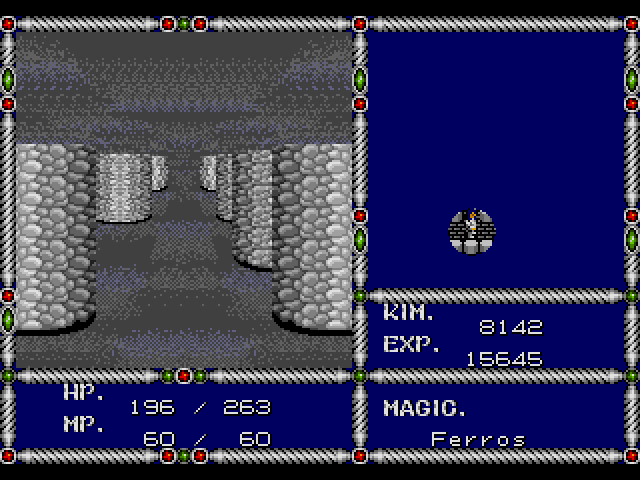
There’s nothing in Sword of Vermilion that’s truly awful. The game has a steady rhythm, so even when you’re grinding for money or experience, you’ll never linger in one area too long. The story is consistently engaging, and it’s always amusing to read the townsfolk dialogue (my favorite remains the Innkeeper from Watling: “Eh? Sorry, I can’t seem to remember how much it costs. Maybe it’s free?”). While the battles are tiresome, after you fight hundreds upon thousands of dogs, wizards and scorpions, you’ll forget that your character has a pathetic sword slice.
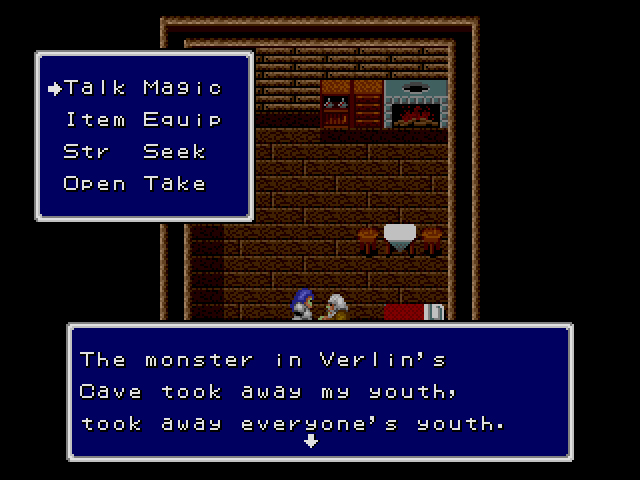
Yet for all of Sega’s boasting that Sword of Vermilion did what Nintendidn’t, the foundation of the game – town, battle, dungeon, repeat – isn’t a significant leap beyond 8-bit RPGs. This is understandable, given how early the game appeared in the 16-bit generation, but also deceiving in the context of Sega’s ballsy advertising campaign. Sword of Vermilion might have looked like the future of “adventure gaming” in the carefully selected screenshots, and it may have impressed gamers who drank the Kool-aid back in early ’91, but there’s a reason Sword of Vermilion is largely forgotten today. Too much showboating, not enough substance.
C+
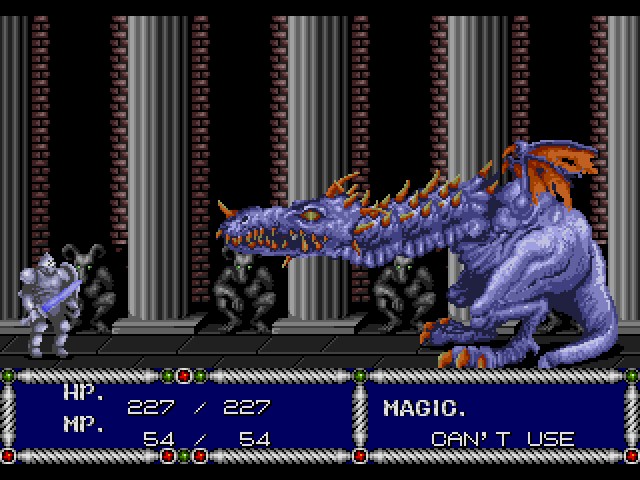

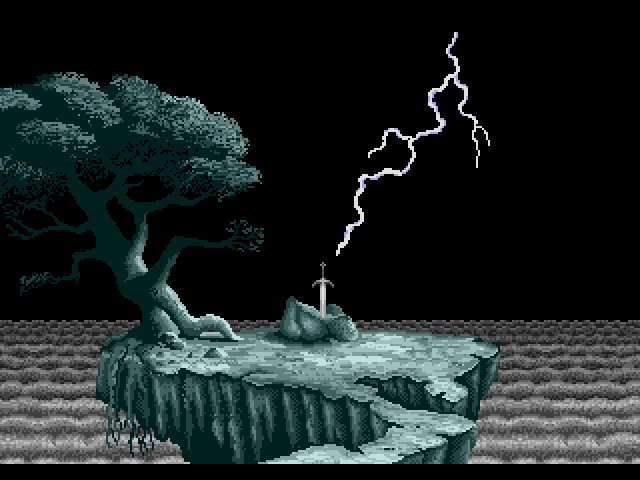
19 replies on “Sword of Vermilion (Genesis, 1989)”
I loved this game at the time, but yeah, I’m not sure that the passage of time has been super kind to it. Still there’s a lot to like there, I’d probably give it a solid B if I were reviewing it. Also, those Genesis Does ads were really all about selling systems, so they were really looking for games that looked really cool. I distinctly remember that James Buster Douglas Knockout Boxing was also featured in those ads, and sorry to spoil the surprise on that one, but it flat out blows. This game also came with a strategy guide similar to the one that came with PS2, but unlike that game, this one was definitely not necessary. In fact, I’d say it made the game too easy.
Yeah, I never felt lost like I did in Phantasy Star II. Though an ‘A’ for effort on Sega’s part. Those 106-page hint books couldn’t have been cheap to print.
I played the shit out of this when i was a kid. Have not fired it up in many years though so I really have no other perspective other than solid nostalgia.
Great review as always Dyl man!
Thanks Benjamin!
I try to keep in mind the time period the game was released for how I grade it, but I can’t ignore how the game has aged.
I played this game through several times as a kid. I still remember trying desperately to dodge the wizards fireballs.
Decent game for it’s time. Good review.
Thanks Greg! I bet I would have loved this game as a kid. Shame I couldn’t have gotten into more Sega games in my childhood.
Those wizard’s fireballs are awful, and particularly the spread attack that takes off huge chunks of life. Bunch of buttholes.
Never played this back in the day, but did play through it a couple of years back on the PS2 Mega Drive Collection.
I didn’t think much of it, but it compelled me to complete it. So it must have had something about it although I probably wouldn’t play through it again.
I think it’s the flow. I was carried along by it and kept playing, despite not being that impressed.
More like “Sword of Vermin!” Amiright? Eh? Eh? I’ll show myself out…
I got this game from a bargain bin several years after it was released. I recall enjoying the game, though finding it somewhat easy. Especially once you have the teleport spells, and that screen clearing magic spell. The bosses looked great, although the controls were very sluggish during those battles. Overall a nice game, but not very memorable. That being said, it was the first RPG I ever owned, so I still have a soft spot for it 😉
“Nice” is a good word for the game.
It’s an interesting game.but not a great one. The story was fairly interesting. I think this was early Genesis and Sega was experimenting and seeing what they could do. So I bought this at release and enjoyed it. But I watched a pla through a few years ago and it hasn’t aged well. I don’t think there was really a game like it at the time. It’s action, but really is mostly RPG. Maybe worth playing if you love RPG”s. The combat sure isn’t great. But it’s not horrible. I love the music though. I suppose in the end I got my money’s worth out of it. But I’ve never played it again.
Great review Dylan. I agree with you that it’s a decent but not overly memorable game. I did really like the music however.
Thanks! Yeah, the music made me wish the game was better. Good thing the soundtrack’s on Youtube.
If your father’s trusted servant is named “Blade,” he’s either a total badass or a traitor waiting to screw you over. Not much middle ground with a name like that.
I got this game the week it came out. I really liked it at the time but I have recently tried to play it and I do agree it is really just average at best now. The only thing I still really love is the music. But it was still a early game.
Great review
Dang, the week it came out? Yeah, I imagine SoV was mindblowing upon release.
Thanks Jonnie!
I mean I agree with your grade on it but didn’t the game come out in the US in 1990 I think you got it confused with Europe’s release date also I i am years too late but I just wanted to say that by the way also I really don’t like this game too it was great for 1990 when it came the US but now it’s not that great in my opinion.
Hi Joseph, yes, you are correct. Thanks for pointing that out, I have changed the date!